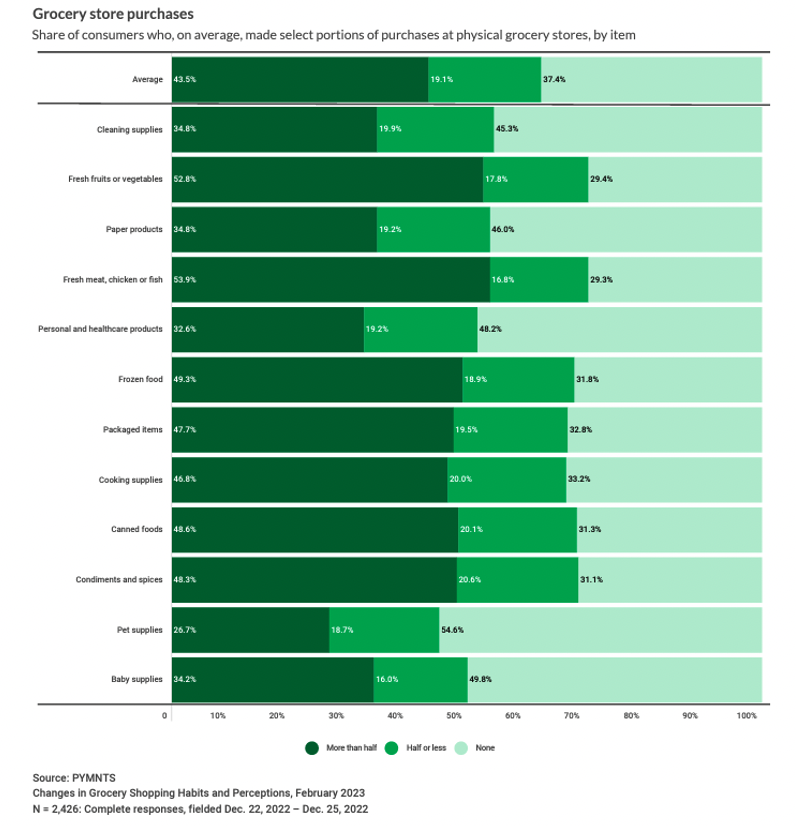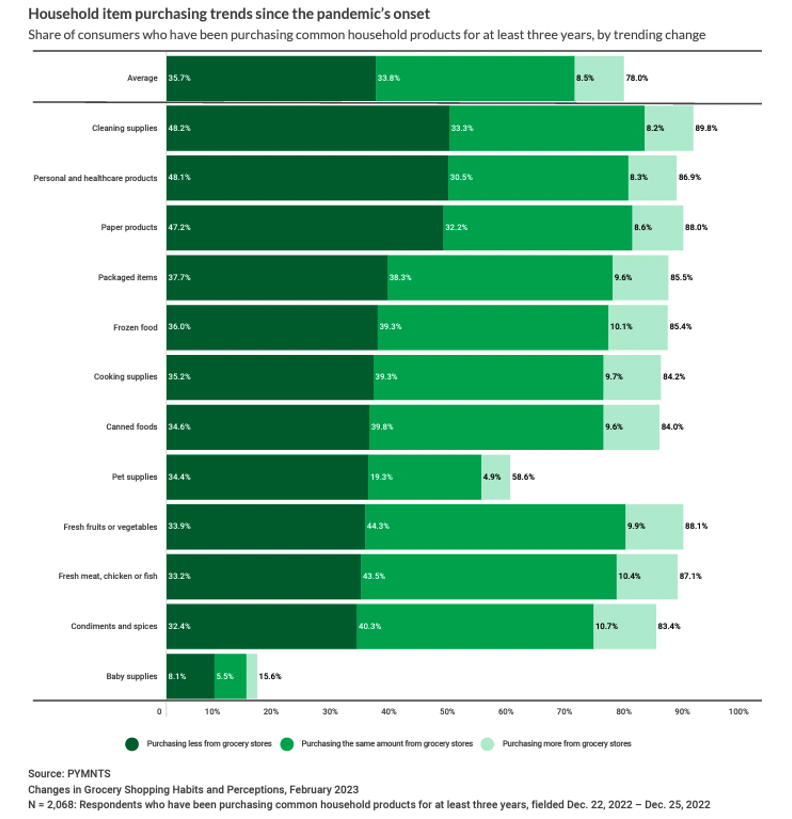Online Groceries Secure Permanent Place in Consumer Spending on Essentials

This installment of PYMNTS’ mini-series on consumer behavior popularized during the pandemic focuses on the rise of online grocery purchases.
The end of lockdowns did not signal the end of market share woes for brick-and-mortar grocers, who have ceded significant spend to their digital counterparts — and it could be getting worse for the beleaguered sector. A large share of food-at-home and essentials found in supermarket aisles were mostly bought in person before the pandemic. Now, they are being purchased through digital platforms. The PYMNTS study “Changes in Grocery Shopping Habits and Perceptions” illustrates consumer grocery purchasing habits.
 The data reflects consumers’ old balance of digital and in-store purchases, as they remember them being in early 2020. As a result, it can be used as a baseline to compare how and where consumers buy these same items today. For example, before the pandemic, 35% of consumers bought over half their cleaning supplies in-store and only 20% said the same for online. The same held true for 34% of consumers buying their paper goods in-store versus 19% online then.
The data reflects consumers’ old balance of digital and in-store purchases, as they remember them being in early 2020. As a result, it can be used as a baseline to compare how and where consumers buy these same items today. For example, before the pandemic, 35% of consumers bought over half their cleaning supplies in-store and only 20% said the same for online. The same held true for 34% of consumers buying their paper goods in-store versus 19% online then.
A few years can make a big difference when it comes to where consumers choose to spend.
Nowadays, the figures on online versus in-person spend look much different. Nearly half of consumers are buying their cleaning products less in person over the last three years versus one-third who have maintained or resumed their in-store habits. For paper products, 47% of consumers are buying their items less in-store, and 32% are purchasing these items at brick-and-mortar locations. These figures on online versus in-person spend get starker when looking at personal and healthcare products, with brick-and-mortar seeing a sharp pullback in the category’s spend that is expected to increase soon.

The good news for brick-and-mortar grocers is that some consumers firmly prefer to purchase some perishables, such as meat, in-store. However, other items are less guaranteed to enjoy the same preferences as consumers continue to seek deals on at-home food and other essentials. While selected surveyed items have seen uneven digital growth, none have seen reduced online spend, but all have in-store. As consumers increasingly implement digital tools into their everyday routines, it may be expected that this digital growth in grocery spend will continue.
In an interview with PYMNTS posted last month, Umamicart Co-founder and CEO Andrea Xu described how consumers are using a multichannel approach for their grocery buying.
“People are becoming much more selective in where they spend their money,” she said. “So, you would notice with our customers that they have somewhere between two to four main grocers that they rotate. They have a main one for the bulk of what they buy — day-to-day items like eggs, milk, etc., where they know what the price point they’re looking for is — and then they have a couple other grocers that just round out their purchase.”
Digital grocery shopping saw more widespread use during the pandemic but is now an increasingly vital part of many consumers’ daily lives. As this and other installments of the mini-series demonstrate, some of the biggest digital consumer-facing advances from lockdowns and other constraints imposed by COVID-19 have allowed consumers to find a larger place in the ConnectedEconomy™.

